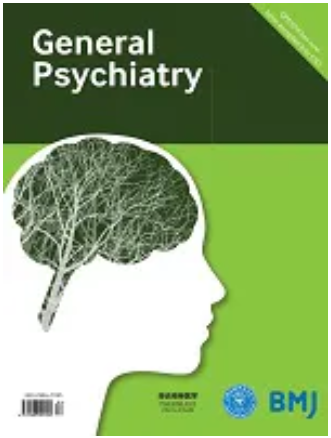Enhancing pain modulation: the efficacy of synchronous combination of virtual reality and transcutaneous electrical nerve stimulation
IF 5.3
3区 医学
Q1 PSYCHIATRY
引用次数: 0
Abstract
Introduction Virtual reality (VR) and transcutaneous electrical nerve stimulation (TENS) have emerged as effective interventions for pain reduction. However, their standalone applications often yield limited analgesic effects, particularly in certain painful conditions. Aims Our hypothesis was that the combination of VR with TENS in a synchronous manner could produce the best analgesic effect among the four experimental conditions. Methods To address this challenge, we proposed a novel pain modulation strategy that synchronously combines VR and TENS, aiming to capitalise on both techniques’ complementary pain modulation mechanisms. Thirty-two healthy subjects participated in the study and underwent three types of interventions: VR alone, a combination of VR with conventional TENS, and a combination of VR with synchronous TENS. Additionally, a control condition with no intervention was included. Perceived pain intensity, pain unpleasantness, positive and negative affect scores, and electroencephalographic (EEG) data were collected before and after the interventions. To delve into the potential moderating role of pain intensity on the analgesic efficacy of VR combined with synchronous TENS, we incorporated two distinct levels of painful stimuli: one representing mild to moderate pain (ie, low pain) and the other representing moderate to severe pain (ie, high pain). Results Our findings revealed that both combination interventions exhibited superior analgesic effects compared with the VR-alone intervention when exposed to low and high pain stimuli. Notably, the combination of VR with synchronous TENS demonstrated greater analgesic efficacy than the combination of VR with conventional TENS. EEG data further supported these results, indicating that both combination interventions elicited a greater reduction in event-related potential magnitude compared with the VR-alone intervention during exposure to low and high pain stimuli. Moreover, the synchronous combination intervention induced a more significant reduction in N2 amplitude than the VR-alone intervention during exposure to low pain stimuli. No significant differences in EEG response changes were detected between the two combination interventions. Both combination interventions resulted in a greater reduction in negative affect compared with the VR-alone intervention. Conclusions Altogether, our study highlights the effectiveness of the synchronous combination of VR and TENS in enhancing pain modulation. These findings offer valuable insights for developing innovative pain treatments, emphasising the importance of tailored and multifaceted therapeutic approaches for various painful conditions. The data in the present study are available upon reasonable request to the corresponding author.增强疼痛调节:虚拟现实与经皮神经电刺激同步结合的疗效
导言 虚拟现实(VR)和经皮神经电刺激(TENS)已成为减轻疼痛的有效干预手段。然而,它们的单独应用往往产生有限的镇痛效果,尤其是在某些疼痛情况下。目的 我们的假设是,在四种实验条件中,将 VR 与 TENS 同步结合可产生最佳镇痛效果。方法 为了应对这一挑战,我们提出了一种同步结合 VR 和 TENS 的新型疼痛调节策略,旨在利用这两种技术互补的疼痛调节机制。32 名健康受试者参与了研究,并接受了三种类型的干预:单独的 VR、VR 与传统 TENS 的结合,以及 VR 与同步 TENS 的结合。此外,还包括一个没有干预的对照组。在干预前后收集了疼痛强度感知、疼痛难受程度、积极和消极情绪评分以及脑电图(EEG)数据。为了研究疼痛强度对 VR 结合同步 TENS 的镇痛效果的潜在调节作用,我们加入了两种不同程度的疼痛刺激:一种代表轻度至中度疼痛(即低痛),另一种代表中度至重度疼痛(即高痛)。结果 我们的研究结果表明,当暴露于低度和高度疼痛刺激时,两种组合干预措施的镇痛效果均优于 VR 单独干预措施。值得注意的是,VR 与同步 TENS 的组合比 VR 与传统 TENS 的组合显示出更强的镇痛效果。脑电图数据进一步支持了这些结果,表明在暴露于低度和高度疼痛刺激时,与单独的 VR 干预相比,两种组合干预都能更大程度地降低事件相关电位幅度。此外,在暴露于低度疼痛刺激时,同步组合干预比 VR 单项干预更显著地降低了 N2 波幅。两种组合干预在脑电图反应变化方面没有发现明显差异。与单独的 VR 干预相比,两种组合干预都能更大程度地降低负面情绪。结论 总之,我们的研究强调了 VR 和 TENS 的同步组合在增强疼痛调节方面的有效性。这些研究结果为开发创新的疼痛治疗方法提供了宝贵的见解,强调了针对各种疼痛状况采取量身定制的多方面治疗方法的重要性。本研究的数据可向通讯作者索取。
本文章由计算机程序翻译,如有差异,请以英文原文为准。
求助全文
约1分钟内获得全文
求助全文
来源期刊

General Psychiatry
医学-精神病学
CiteScore
21.90
自引率
2.50%
发文量
848
期刊介绍:
General Psychiatry (GPSYCH), an open-access journal established in 1959, has been a pioneer in disseminating leading psychiatry research. Addressing a global audience of psychiatrists and mental health professionals, the journal covers diverse topics and publishes original research, systematic reviews, meta-analyses, forums on topical issues, case reports, research methods in psychiatry, and a distinctive section on 'Biostatistics in Psychiatry'. The scope includes original articles on basic research, clinical research, community-based studies, and ecological studies, encompassing a broad spectrum of psychiatric interests.
 求助内容:
求助内容: 应助结果提醒方式:
应助结果提醒方式:


